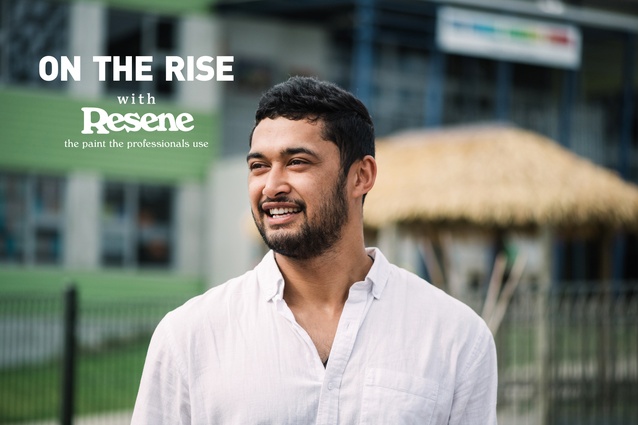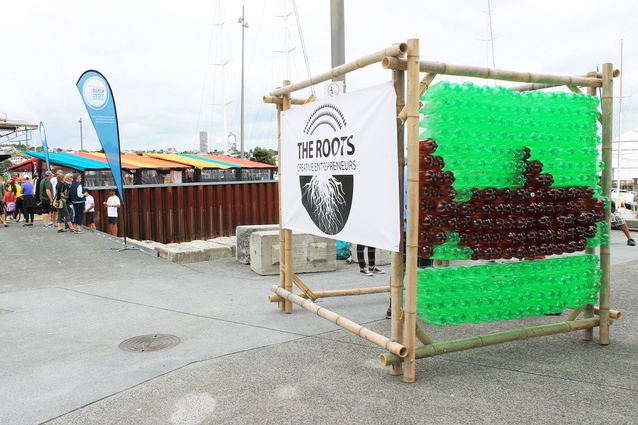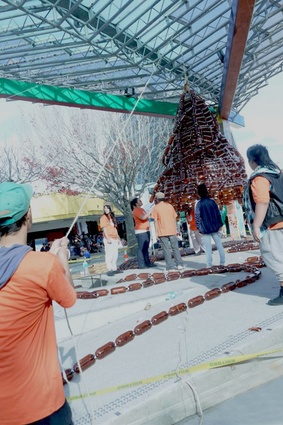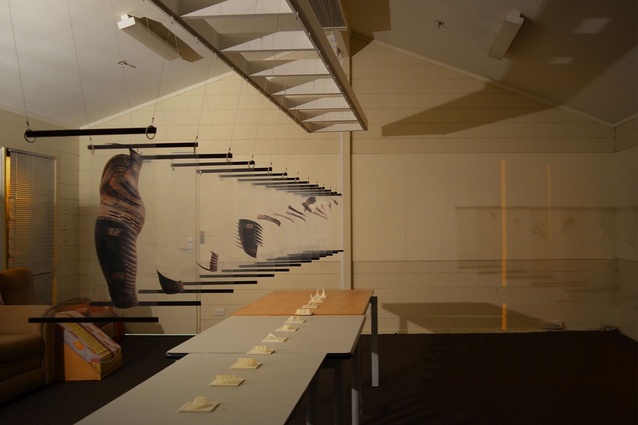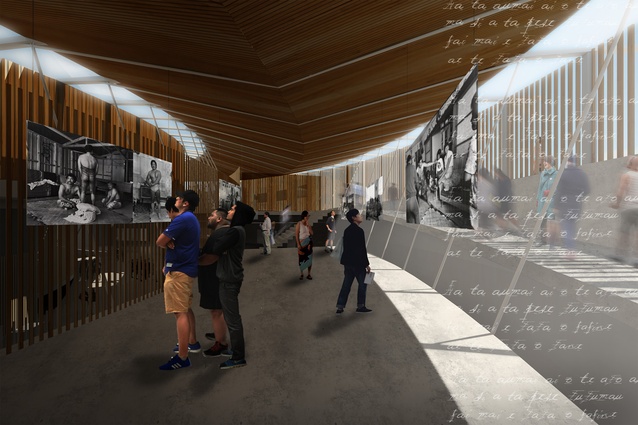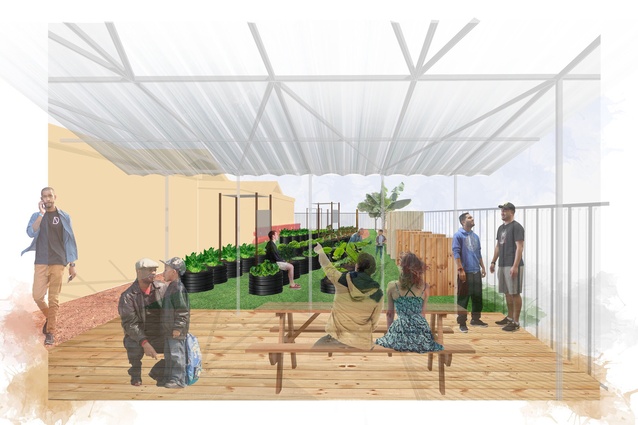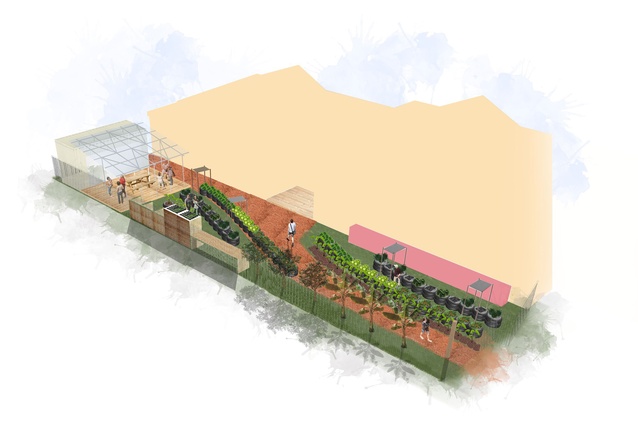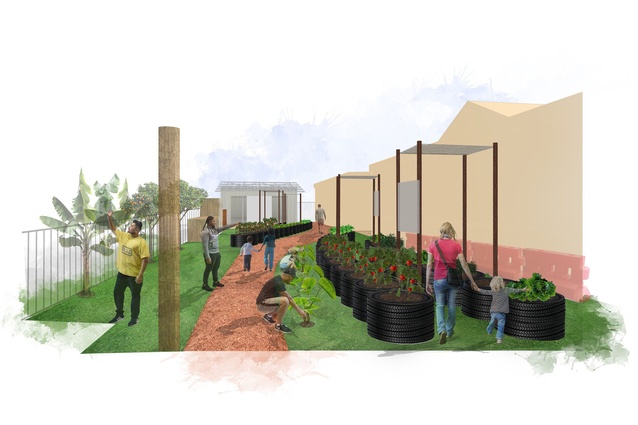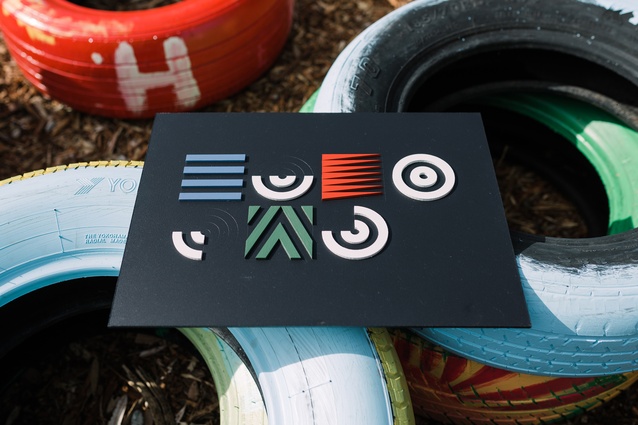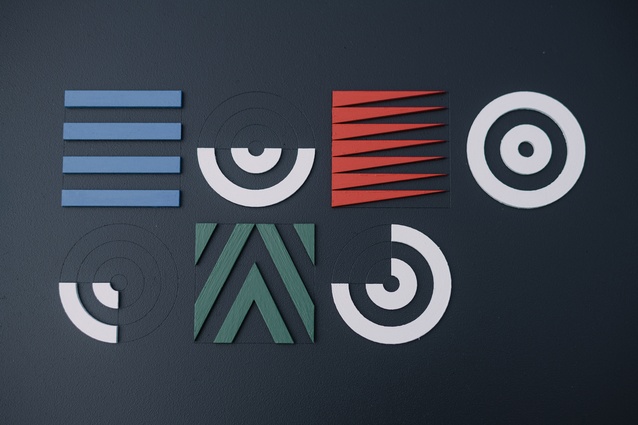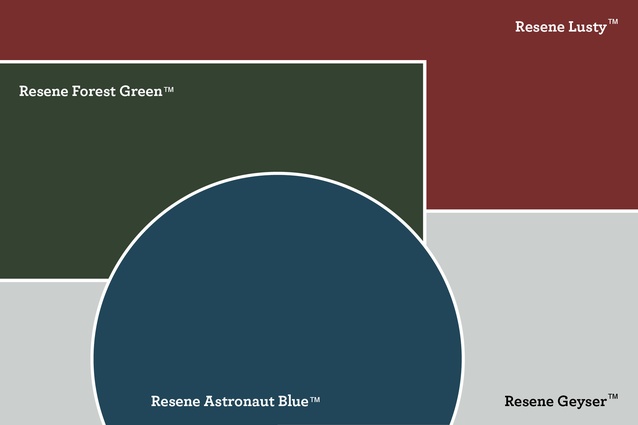On the Rise: John Belford-Lelaulu
The ArchitectureNow On the Rise series, supported by Resene, focuses on up-and-coming young designers and architects from across New Zealand. For the tenth interview in the series, we talk to John Belford-Lelaulu. John is an architecture graduate of Samoan heritage who now calls himself a social designer.
Ashley Cusick caught up with John at Mangere East (ME) Family Services, where he is currently working on projects to connect with the South Auckland community.
Ashley Cusick (AC): When did you know you wanted to be an architect? Did you ever consider any other career paths?
John Belford-Lelaulu (JBL): There were a couple of things. Firstly, I remember my electrician teacher in year nine talking about how much money electricians make and all of the great work that they do. I went home and I said, “Mom, I want to become and electrician.” She said, “No! You’re going to become an architect.”
Also in year nine, I found I had a really keen interest for graphics. I was quite a naughty kid though, so I got kicked out of graphics class for two weeks. I realised that I really missed it, so I wrote a note and gave it to the teacher that said I wanted to come back to class because I wanted to become the greatest architect in the world. I didn’t even really know what an architect was, but I heard that graphics led on to architecture. My teacher let me back in after that.

AC: And when did you decide that you wanted to go towards social design, rather than following a ‘traditional’ path?
JBL: When I first got in to Unitec, I felt really disconnected from what was being taught because I was questioning why they didn’t teach more Pasifika/Māori architecture. But, in my second year, two of the people I consider my mentors – Waikare Komene and Martin Leung-Wai – started up a group called The Roots. They were both in architecture and studied architecture, but The Roots was based around how we can use our creative skills to inspire the next generation of creatives and designers.
I had that experience, but throughout my education I also had internships at Fearon Hay, work experience at Jasmax and some things here and there for Design Tribe. I was getting this combination of experience in community architecture and commercial architecture.
When I got to my thesis year I kind of had to make a choice, because you have to decide how to make a living. Unfortunately, I didn’t get the opportunity to do community and commercial together, because there isn’t that kind of practice yet. I chose community architecture and I went to work with The Roots. I was their first full-time intern and I worked with them for six months.
It was there that I really started seeing how I can use my architecture education to both inspire my Pasifika and Māori people and the next generation. I also started seeing how architecture really is a tool to alleviate issues such as poverty and inequality.
AC: Have you ever had a moment where you’ve wished you took the commercial architecture path?
JBL: Oh, all the time! Even today! There’s always questioning, but this is the avenue that I want to be exploring.

AC: Your Master’s thesis allowed you to explore Pasifika architecture a bit more, correct? Tell us about that project.
JBL: My thesis was based around architecturalising the traditional Samoan tattoo. I was really interested in values such as our responsibility to our family and our community and self-exploration, but mostly, this idea of service. In Samoan it’s tautua, and it is such a fundamental and intrinsic part of what it means to be Samoan.
I realised through that thesis project that the Samoan tattoo became a symbol for cultural identity, especially for diaspora and migrant communities who are living here in New Zealand. The tattoo was their connection back to their motherland. So, I also started exploring how architecture plays a role in reconnecting people to their communities, although they’re living in a different country. A combination of all those things was my thesis project.
That was really the defining moment for me and from there I asked, how can I make a career out of this? Everything I’m doing now is a by-product of my life, but it is also a by-product of the exploration that I undertook during my thesis.
AC: Are there any people who influenced you or supported you throughout your journey?
JBL: My two mentors that I mentioned earlier, Waikare and Martin. They became an influence firstly in getting me through my bachelors and my masters and also in showing me the courage – the courage that they had showed – to pursue a new avenue within the architecture industry here in New Zealand. At that point, there weren’t many precedents for them to go out and start their own firm based around community architecture. So, that was an inspiration for me.
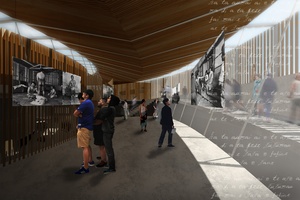
There have also been other people such as Albert Refiti and Rau Hoskins, who have also been mentors. I know it’s a bunch of men but… they’re all Pasifika and Māori and they’ve all gone out and pursued avenues that no one else had pursued before them. I find that really inspiring, and I hope the work that I do compliments what they do.
AC: You also spent some time working in social design in New York City. What led you there?
JBL: I loved working with The Roots but I always knew that I wanted to go overseas. Me being me, I picked the hardest place in the world to go, which was New York. Then I started looking around for avenues that were very similar to The Roots. I stumbled across an application online for a volunteer project coordinator for mobile shower facilities for the chronically homeless. I went, “That’s it.” That was a week before I left for New York, and it was a voluntary position.
So, I sent them a bunch of e-mails and didn’t hear back from them, but I knew that was what I wanted to do. I left for New York and I didn’t know what I was going to do when I got there. After I arrived, they e-mailed and asked if I wanted to catch up. It all started from there and I began working with Architecture for Humanity, which is called Open Architecture now. I was working there four or five days a week, all voluntary, and working at a bar as well. The first three months were amazing, but I was also exhausted.
AC: Obviously, that’s quite a difficult path to be working for free and working a second job to support yourself – in one of the most expensive cities in the world no less. What drives you to take that path even though it’s a lot more difficult in some ways?
JBL: There are many reasons, but a few that I can think of are, firstly, my upbringing. I grew up in a strong Samoan household, but I also grew up in households that were affected by poverty. How I see my work now is really questioning how I can prevent people from going through the upbringing that I went through. That’s what drives me to use my position to alleviate poverty. That’s my purpose. A second driver is the knowledge that most of my Pasifika community lives in poverty. In New Zealand the Pasifika community has the highest concentration of people living in poverty, and that comes right from here, in South Auckland.
I realise too that coming and living in a whole different world and nation – you know, most of our families are migrants – really comes with its challenges. One of those challenges is a disconnection from our cultural identity. How I see it, that is probably the poorest that you can get, when you’re cut off from your culture. Most of the people I work with are a by-product of that disconnection. What really drives me is reconnecting our cultural identities to our career pathways and to other avenues in our communities.
What drives me even more is making social entrepreneurship a pathway that people can take after education. How can we normalise people being entrepreneurs after architecture practice? And how can we normalise pursuing Pasifika thoughts and Pasifika worldviews?
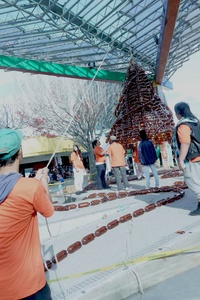
Lastly, I just want to create a more compassionate society.
AC: What did you take from your time in New York back to your practice here?
JBL: Bravery. And tenacity. It is just absolute grit there, and you have to know who you are. I have to say, New York threw me into a dryer and spun me around. Who I am today definitely came from that time. If you can live there for 10 months then you can live anywhere. That drive that New York taught me – and just being relentless – is what I bring in to my work now.
It also helped me come to understand why my work is important and relevant. I had to think for myself, I had to come up with the concepts myself and I had to make relationships myself. It was there that I realised architecture can alleviate poverty by providing education opportunities and employment opportunities. Once I saw that, I realised that’s exactly what we can do, and are doing, in New Zealand with The Roots and Panuku and The Southern Initiative and things like that.
New York also led me to the Philippines, and working in different villages there is how MAU Studio started. So, it was the gateway to many of the things that I’m doing now.
AC: You started MAU Studio as a social design firm with a few other architecture and design graduates. How did it start and what is the practice up to at the moment?
JBL: Over in the Philippines we were working on projects with locals who wanted to create learning centres. At that point, we realised that it was a lot bigger than ourselves. It wasn’t just about us coming up with responses or coming up with designs. We thought, how do we use our platform to create more education pathways and employment opportunities into social design? We realised that we needed to be more than just an architecture practice but also an educational platform.
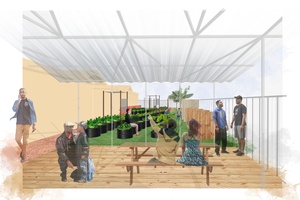
We received a grant from Unitec called the Bold Innovators Scholarship, and they allowed us to conceptualise what MAU Studio would be. We came up with a social design methodology and said we want to provide opportunities for high school students, tertiary students and also professionals to get involved in social design. This year, we started testing it, and we’ve been running pilot projects to determine what the different nodes could look like.
At the high school level we started up MAU Academy. I’m working with 10 De La Salle College students – that’s my old high school – who are refurbishing and building a community garden for ME Family Services. They’re doing art murals, a small little pavilion, a number of different garden beds and someone is doing the story telling for the whole programme. It’s all about providing opportunities for high school students to engage in social projects.
The tertiary programme was MAU Workshop. We wanted to allow Pasifika and Māori students to be engaged in Pacific projects. The wider vision is engaging tertiary students in social impact projects: nationally and internationally. The first project was refurbishing ruins from the 2009 tsunami. I worked with 14 architecture students in Samoa and they came up with two propositions. We just got back from our trip over there and the project has taken a life of it’s own. Now, it’s going to be the precinct for the Poutasi Women’s Committee: an information centre, a meeting house, offices for them and learning centres so they can also provide education opportunities for women in Poutasi.
Our last component that we’re looking at trialling is MAU Immerse, which are immersive experiences for people to work within social design. So we’re taking the 10 students from De La Salle and two from Taranaki over to the Philippines next year. That’s the little hive that we have, or ecosystem, at the moment.
AC: How does your Samoan heritage influence your designs and your professional work?

JBL: For Samoans, it comes down to service. There’s a proverb which is ‘O le ala i le pule o le tautua’, meaning, ‘The path to authority is through service’. In order to do anything in Samoa, you need to be serving. You can’t just become an architect or a chief. You have to be helping different members of the community. For me, I ask myself how I can serve the most vulnerable people in our communities. Just naturally, here in New Zealand, that happens to be my people.
Part of the process of starting MAU Studio has been learning what mau means to us. Mau is a pan-pacific term meaning to strive or to persevere or to hold on firmly to something. In Māori it’s short for mauri, which is the life force, and in Samoan it means productions of the earth. For us at the studio it means purpose. Our mission, our vision, over at MAU is to enable people to find their mau, and we feel like people find that through their cultural values and through service.
AC: As part of the On the Rise series, we ask participants to create a mood board using Resene colours. Tell us about what you’ve created and the colours you’ve chosen.
JBL: Going through the process of trying to understand what it means to be Samoan and what my values are, I came across a paper from Tui Atua, which is called In Search of Harmony. It explores peace within the indigenous religion of Samoa. What he speaks about are the different harmonies that our indigenous people lived by: the harmony between people and the cosmos; people and the environment; people and each other; and people and self. Living the balance between all four of these harmonies is how we are able to be as a Samoan.

My mood board represents that learning process and how I push my values into my practice. There are three harmonies: the harmony of the cosmos, which is painted in blue; the harmony with the environment, so that is green; and the harmony with each other, which is red.
The smaller semi-circles represent my journey of understanding these different harmonies – starting off small and slowly getting larger and larger. Where I’d like to get to in my practice is an understanding of the harmony within life and reconnecting with self, and that is portrayed in white.
AC: What are some of your goals for the future? Do you still want to be the greatest architect in the world?
JBL: I’m not too sure. Becoming the greatest architect in the world isn’t a goal really anymore. That was just a 13 year old talking and that planted the seed for me. My goal is for us to explore more avenues for how architecture can alleviate poverty. How does it fit within the context of natural disaster relief, or climate change? For me, it’s providing more opportunities for Pasifika entrepreneurs, and tying that dream into the core of MAU Studio.
I hope, one day, that we’ll be able to influence how our architecture industry practices. I’d like to say one day that MAU Studio influenced who we work for and who we work with as an industry and that we changed the aspirations of the industry too, making it more socially driven.
Read the others in the On the Rise with Resene series: Haley Hooper, Geordie Shaw, Maria Chen, Ed Dromgool, Beth Cameron, Te Ari Prendergast, Raphaela Rose, Natalie Bradburn, and Melanie Kassian.

